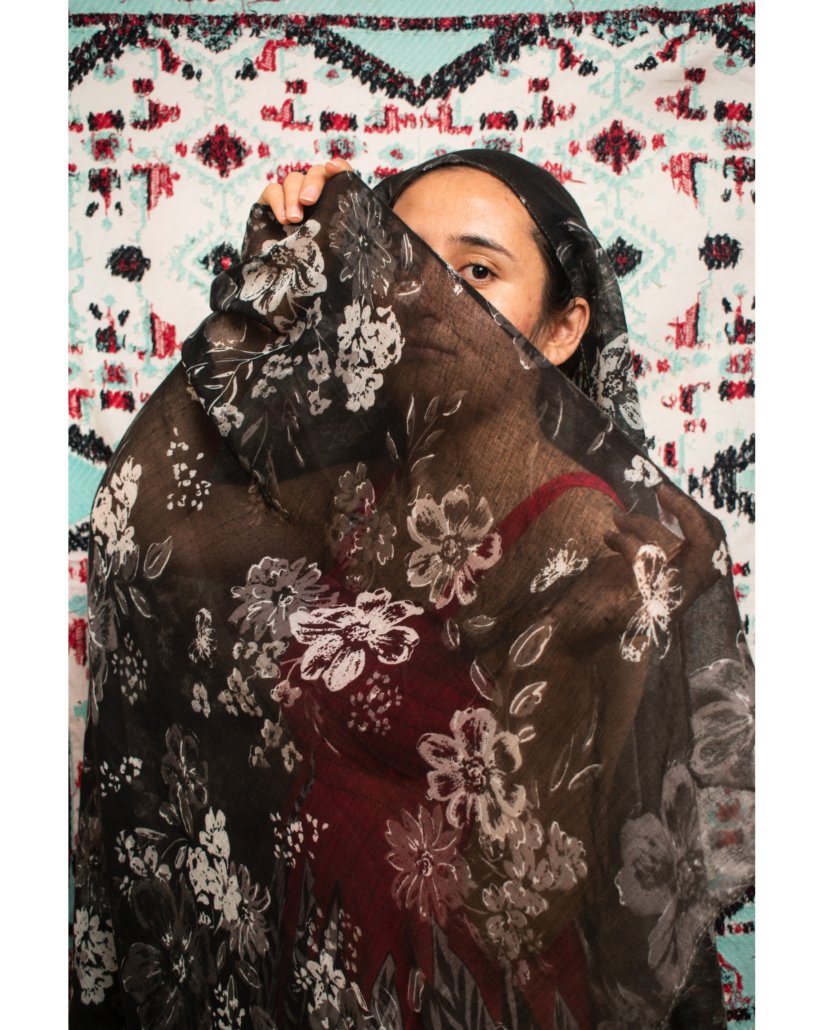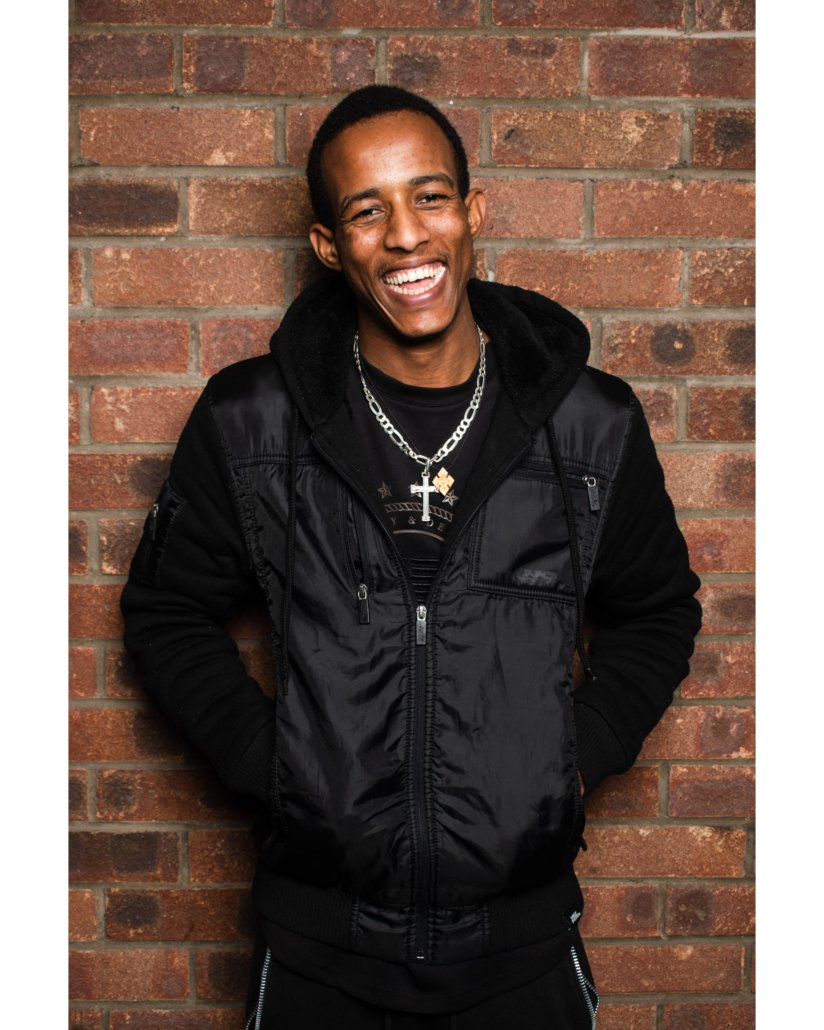 594
594  5 mins
5 mins Witness Change is a small NGO with an outsized reach.
Founded in 2016 by photojournalist Robin Hammond, Witness Change crafts visual storytelling campaigns that have reached over 200 million people.
Buoyed by social media, these campaigns bring visibility to people who are otherwise excluded, marginalized or outcast.
It’s an incredibly powerful idea.
By telling their stories firsthand, stigmatized people are suddenly seen for who they really are.
An “outcast” becomes a fellow human being on a journey, sharing their fears, hopes, frailties, and strengths.
Their narratives create a connection. Connection fosters tolerance and empathy.
In the process, attitudes soften, and a window of possibility opens.
Witness Change sees storytelling as an essential step towards creating policies that ultimately improve the lives of excluded people.
Witness Change – the team
The team at Witness Change is small, mostly volunteer, and obviously highly efficient.
They run 3 global storytelling projects. Yet, their staff never exceeds more than three people working part-time.
The team is united in their belief that “change is possible.”
According to William Lounsbury, Head of Communications at Witness Change, “All of our projects wouldn’t be possible without a team of really amazing volunteers, a lot of people who spend a lot of time doing amazing work to bring these stories to life.”

“Life has been very difficult since I arrived in Europe,” recounts Maryam (pseud, 18), an Afghan refugee who left her home in Iran and now lives in Greece. “I am in state of indecision and have an unknown future,” she says. Maryam spends her days studying. Watching films and walking are calming, but her journey, which meant leaving her family behind at age 15, still haunts her. She has changed, too: “I used to be a weak person… I am no longer that person, I am exactly the opposite of my past.” Her experiences have “made me a stronger and braver woman who can now defend her rights and she does not stay silent in the face of opposition.” Maryam’s dreams have changed over time, as well. As a child she dreamt of becoming a doctor; however for several years her only dream was “to reach my destination safely.” Now, she hopes to “get out of this uncertain situation as soon as possible and be able to enter the university and fulfil my long-held dream of becoming a doctor so I can help people.” Zahra Mojahed / Witness Change for OSF
Visual storytelling
Their first project, launched in 2016 was called “Where Love Is Illegal.”
It relayed stories of survival from LGBTQI+ people who facing repression in the communities where they lived.
It was a resounding success and exhibited worldwide and featured in many media, including the covers on Time Magazine and National Geographic.
As a result, the United Nations invited Robin Hammond in 2018 to speak about the extrajudicial killing and torture of LGBTI+ people.
This stunning and powerful campaign has become an ongoing six-year-long cataloging of the experiences of LGBTQIA+ people.
1000 Dreams, about refugees, by refugees
Their newest campaign is called 1000 dreams.
The campaign tells the stories of 1000 refugees from across Europe, a land with 2.6 million refugees.
1000 Dreams was released this year on June 20th – World Refugee Day. The project relies on over 40 storytellers, each with a refugee background, to conduct interviews with 1000 people who have sought refuge in Europe.
“Every picture is made by a refugee of a refugee
every interview is done by a refugee of a refugee”
Each interview offers an intimate glimpse into the life of a person fleeing their home with the dream of finding a better life.
Moreover, the people interviewed also share the emotional toll of seeking international protection by coming to Europe.
By relying on people from the refugee community to conduct the interviews rather than western photojournalists, Witness Change creates an opportunity for dialogue free from the “non-refugee gaze.”
“We’ve been removing ourselves (the Witness Change team) more and more from the storytelling process and how it’s done. Because no matter what, if you are an outsider, you will come in with your own biases and own expectations. Also, because you are an outsider, the people you are meeting will know that you have these biases and expectations.”
Peer-to-peer storytelling is an approach that gives more authenticity to the stories told.
“When looking for personal testimonies, the more connection between the storyteller and the person telling the story, the more depth you can get to their story.”

“My dream was to be safe and protected… and to live myself as people do,” says Tekle Berihu (18), who immigrated to Britain as a refugee five years ago. He left his home, Eritrea, to escape a challenging political situation and mandatory military service. Looking back, he struggles to explain his journey to others: “If you try to tell them how I come through… they can’t even imagine it. So it was really hard…. you see people was dying in front of your eyes,” he recalls. When these memories come to mind, he says: “I feel really sad and can’t do anything.” For a while, he could hardly sleep. “You can’t forget them, but try to,” he says. He misses his family and worries about them, praying for them and contacting them when possible, but Tekle’s life has become “more and more easier.” Now, he spends his time in school, on the football pitch, or at church, where he is a deacon. His dream is “to study hard, to get my A-Level done and go to uni and to be an engineer.” Osama Gaweesh / Witness Change for OSF
Teaching storytelling
So how does Witness Change create this space?
Training.
They ran a series of training workshops throughout Europe, three in person and three online, with refugees or people with a refugee experience.
The first two workshops took place in Greece – Athens and Lesvos – and the third in London. The online workshops were open to refugees anywhere in Europe.
The project included equipping the storytellers with photo equipment.
Witness Change taught them how to make specific types of pictures and conduct the interviews.
Likewise, they then supported them with mentoring by Robin Hammond as they went out into their communities and documented stories of other refugees.
The final result of their work is 1000 Dreams.
“In this project, 1000 dreams, every picture is made by a refugee of a refugee. And every interview is done by a refugee of a refugee.”
Beyond “just getting the story”
After submitting their stories to the 1000 dreams project, each volunteer was given ownership of the equipment. “We think that it is essential that it’s not just a project, but also something that has value beyond just this work. We are supporting people who might be interested in continuing a career in either photography, visual storytelling, or journalism. Helping them and giving them the academic tools and also physical tools to continue doing that.”
Impulsing energy that goes beyond the campaign is what makes Witness Change’s projects unique.
The 1000 Dreams project is not simply about sharing the personal stories of refugees in Europe to generate awareness and destigmatize.
1000 Dreams aims to give something back to the people who take part in the project.
“Doing it this way has been beneficial because there are so many stereotypes, especially in Europe, about what a refugee and their experience is. It tends to fall underneath these two categories: they are either a terrifying form of invader or a helpless victim. If we were the ones taking the photos and telling the stories, it would be deeply sympathetic to refugees because we want to support them. But the people we would be talking to would also know that we as outsiders expect this victim narrative. What’s important about this work is that people with similar backgrounds talk to each other. You lose a lot of those tropes. You get something that is a little more complex and human and, in the end, really beautiful.”
The future
The plan for the future of 1000 Dreams?
Witness Change intends to expand the campaign worldwide because living life as a refugee is not limited to Europe.
For various reasons, the number of people living as refugees has doubled over the last decade.
Witness Change believes that their voices need to be heard.
For more on Witness Change
Learn more about Witness Change by visiting their website, Instagram, Facebook or Twitter.
Likewise, check out 1000 dreams at 1000 Dreams or on IG @1000dreams.
Feature image: Shutterstock / Rawpixel.com


 Nito / Shutterstock
Nito / Shutterstock Goldman Prize
Goldman Prize